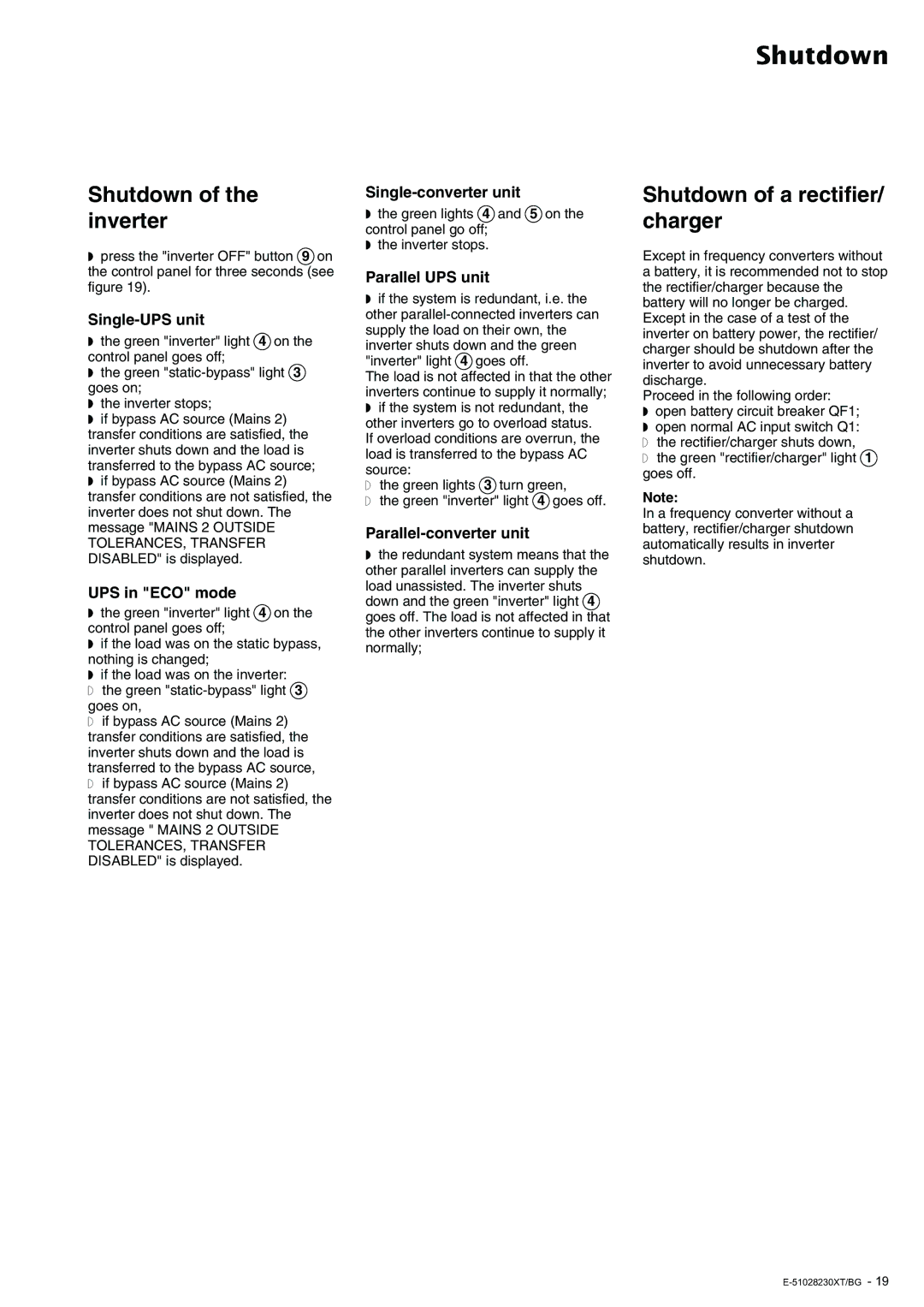
Shutdown
Shutdown of the inverter
◗press the "inverter OFF" button 9 on the control panel for three seconds (see figure 19).
Single-UPS unit
◗the green "inverter" light 4 on the control panel goes off;
◗the green
◗the inverter stops;
◗if bypass AC source (Mains 2) transfer conditions are satisfied, the inverter shuts down and the load is transferred to the bypass AC source;
◗if bypass AC source (Mains 2) transfer conditions are not satisfied, the inverter does not shut down. The message "MAINS 2 OUTSIDE TOLERANCES, TRANSFER DISABLED" is displayed.
UPS in "ECO" mode
◗the green "inverter" light 4 on the control panel goes off;
◗if the load was on the static bypass, nothing is changed;
◗if the load was on the inverter:
◗the green
◗if bypass AC source (Mains 2) transfer conditions are satisfied, the inverter shuts down and the load is transferred to the bypass AC source,
◗if bypass AC source (Mains 2) transfer conditions are not satisfied, the inverter does not shut down. The message " MAINS 2 OUTSIDE TOLERANCES, TRANSFER DISABLED" is displayed.
Single-converter unit
◗the green lights 4 and 5 on the control panel go off;
◗the inverter stops.
Parallel UPS unit
◗if the system is redundant, i.e. the other
The load is not affected in that the other inverters continue to supply it normally;
◗if the system is not redundant, the other inverters go to overload status. If overload conditions are overrun, the load is transferred to the bypass AC source:
◗the green lights 3 turn green,
◗the green "inverter" light 4 goes off.
Parallel-converter unit
◗the redundant system means that the other parallel inverters can supply the load unassisted. The inverter shuts down and the green "inverter" light 4 goes off. The load is not affected in that the other inverters continue to supply it normally;
Shutdown of a rectifier/ charger
Except in frequency converters without a battery, it is recommended not to stop the rectifier/charger because the battery will no longer be charged. Except in the case of a test of the inverter on battery power, the rectifier/ charger should be shutdown after the inverter to avoid unnecessary battery discharge.
Proceed in the following order:
◗open battery circuit breaker QF1;
◗open normal AC input switch Q1:
◗the rectifier/charger shuts down,
◗the green "rectifier/charger" light 1 goes off.
Note:
In a frequency converter without a battery, rectifier/charger shutdown automatically results in inverter shutdown.
